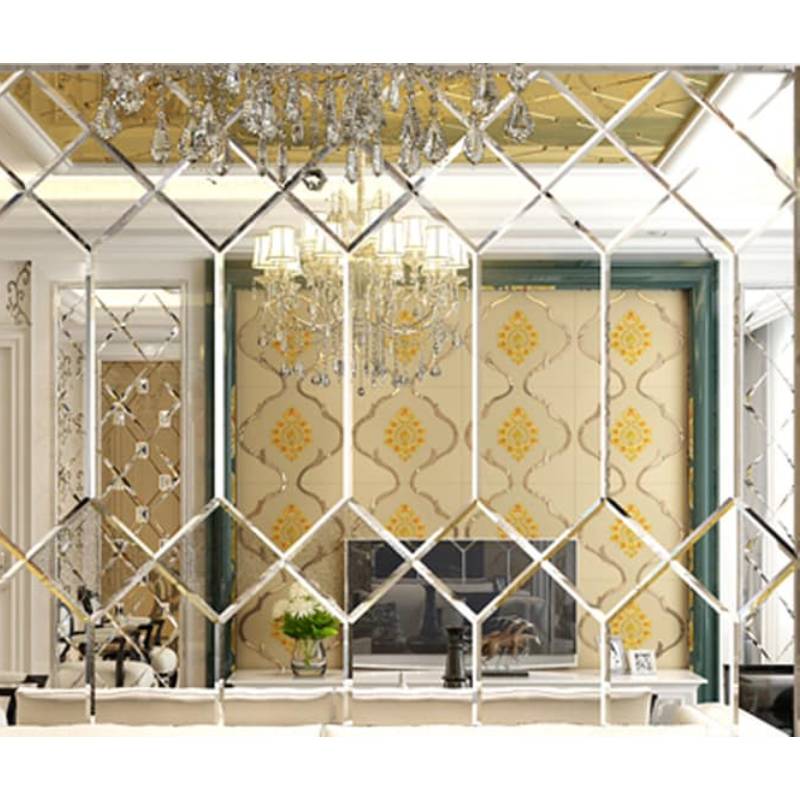The Enchanting World of Architectural Dichroic Glass
Dichroic glass has emerged as a captivating material in contemporary architecture, captivating the imagination of designers and architects alike. Known for its unique optical properties, this specialized glass can exhibit two different colors when viewed from different angles or illuminated by varying light sources. The integration of dichroic glass in architectural designs not only elevates aesthetic appeal but also transforms the overall ambiance of spaces, creating dynamic environments that inspire and engage.
The Science Behind Dichroic Glass
At its core, dichroic glass is a type of glass that has been treated with a thin layer of metal oxides. This process, often referred to as thin-film technology, enables the glass to reflect specific wavelengths of light while transmitting others. As a result, the glass displays a mesmerizing array of colors that shift based on the angle of light and the viewer's perspective. The interplay of light and color creates an illusion of depth and motion, making every glance at the glass a unique experience.
This optical phenomenon is not entirely new; dichroic materials have been used for centuries in jewelry and art. However, its application in architecture brings a fresh perspective, melding traditional craftsmanship with modern technological advancements. The glass is now being utilized in a variety of architectural elements, including facades, windows, skylights, and interior partitions, allowing for an innovative exploration of light and color.
Aesthetic Impact in Architecture
Architects and designers are increasingly favoring dichroic glass due to its aesthetic versatility. When incorporated into building facades, it can create a dynamic surface that changes throughout the day. As sunlight moves across the sky, the glass reflects different hues, giving the structure a vibrant, ever-changing appearance. This can be particularly striking in urban environments, where the love for contemporary design meets the need for individuality and expression.
Dichroic glass is not just limited to exteriors; it can also enhance interior spaces. By using this glass in partition walls or skylights, designers can introduce light and color in unexpected ways. For instance, in public spaces like museums and galleries, dichroic glass can highlight exhibits or create focal points that engage visitors. The colors and light patterns invoke emotions and curiosity, making the environment more immersive.
architectural dichroic glass
Environmental Considerations
Beyond its aesthetic appeal, dichroic glass also contributes to sustainability in architecture. The ability to manipulate light can reduce reliance on artificial lighting. By allowing natural light to filter through while maintaining privacy, dichroic glass serves both functional and eco-friendly purposes. This emphasis on natural illumination can lead to energy savings and a lower carbon footprint, aligning with modern principles of sustainable design.
Additionally, the durability of dichroic glass means it can withstand various environmental conditions, making it a viable option for exterior applications. The longevity of the material reduces the need for frequent replacements, thereby minimizing waste and conserving resources over the building's lifespan.
Challenges and Considerations
Despite its many advantages, the use of dichroic glass does come with its challenges. The cost of production and installation can be higher than that of traditional glass, which may limit its application for some projects. Additionally, the complexity of working with dichroic materials requires skilled craftsmanship to ensure optimal results. Architects must carefully consider how to best integrate the glass, balancing aesthetics with practicality.
Another factor to consider is the perception of color. Different cultures and individuals may respond variably to particular color combinations, impacting the emotional resonance of the space. Architects need to design thoughtfully, ensuring that the use of dichroic glass aligns with the intended atmosphere and experience.
Conclusion
Architectural dichroic glass offers an exciting avenue for exploring the relationships between light, color, and space. Its ability to transform ordinary environments into extraordinary experiences is a testament to the endless possibilities of architectural design. As technology advances and materials become more accessible, the future of dichroic glass in architecture is poised to expand, inviting more creators to experiment with its unique characteristics. In a world where design increasingly seeks to engage and inspire, dichroic glass stands out as a beacon of innovation, artistry, and sustainability, redefining the boundaries of architectural expression.
 Afrikaans
Afrikaans  Albanian
Albanian  Amharic
Amharic  Arabic
Arabic  Armenian
Armenian  Azerbaijani
Azerbaijani  Basque
Basque  Belarusian
Belarusian  Bengali
Bengali  Bosnian
Bosnian  Bulgarian
Bulgarian  Catalan
Catalan  Cebuano
Cebuano  Corsican
Corsican  Croatian
Croatian  Czech
Czech  Danish
Danish  Dutch
Dutch  English
English  Esperanto
Esperanto  Estonian
Estonian  Finnish
Finnish  French
French  Frisian
Frisian  Galician
Galician  Georgian
Georgian  German
German  Greek
Greek  Gujarati
Gujarati  Haitian Creole
Haitian Creole  hausa
hausa  hawaiian
hawaiian  Hebrew
Hebrew  Hindi
Hindi  Miao
Miao  Hungarian
Hungarian  Icelandic
Icelandic  igbo
igbo  Indonesian
Indonesian  irish
irish  Italian
Italian  Japanese
Japanese  Javanese
Javanese  Kannada
Kannada  kazakh
kazakh  Khmer
Khmer  Rwandese
Rwandese  Korean
Korean  Kurdish
Kurdish  Kyrgyz
Kyrgyz  Lao
Lao  Latin
Latin  Latvian
Latvian  Lithuanian
Lithuanian  Luxembourgish
Luxembourgish  Macedonian
Macedonian  Malgashi
Malgashi  Malay
Malay  Malayalam
Malayalam  Maltese
Maltese  Maori
Maori  Marathi
Marathi  Mongolian
Mongolian  Myanmar
Myanmar  Nepali
Nepali  Norwegian
Norwegian  Norwegian
Norwegian  Occitan
Occitan  Pashto
Pashto  Persian
Persian  Polish
Polish  Portuguese
Portuguese  Punjabi
Punjabi  Romanian
Romanian  Russian
Russian  Samoan
Samoan  Scottish Gaelic
Scottish Gaelic  Serbian
Serbian  Sesotho
Sesotho  Shona
Shona  Sindhi
Sindhi  Sinhala
Sinhala  Slovak
Slovak  Slovenian
Slovenian  Somali
Somali  Spanish
Spanish  Sundanese
Sundanese  Swahili
Swahili  Swedish
Swedish  Tagalog
Tagalog  Tajik
Tajik  Tamil
Tamil  Tatar
Tatar  Telugu
Telugu  Thai
Thai  Turkish
Turkish  Turkmen
Turkmen  Ukrainian
Ukrainian  Urdu
Urdu  Uighur
Uighur  Uzbek
Uzbek  Vietnamese
Vietnamese  Welsh
Welsh  Bantu
Bantu  Yiddish
Yiddish  Yoruba
Yoruba  Zulu
Zulu 

